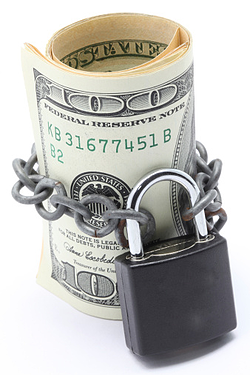Invoice discounting is a process wherein a business sells its unpaid invoices to a financing company in order to access cash tied in those invoices at a discounted value. This allows businesses to receive immediate cash flow instead of waiting for the payment from their customers.
By partnering with a reliable invoice discounting company, businesses can effectively manage their cash flow and improve their financial stability. Invoice discounting is a convenient and flexible financing option that provides businesses with the necessary funds to cover their operational expenses, invest in growth opportunities, and meet their financial obligations.
It is a valuable tool for businesses of all sizes and industries, helping them improve their cash flow and maintain a healthy financial position.

Credit: www.fastarfunding.com
Understanding Invoice Discounting
Invoice discounting is a financial solution where businesses sell their unpaid invoices to a financing company in order to access immediate cash flow. By discounting invoices, businesses can receive discounted future cash flow at present value, allowing them to better manage their finances.
What Is Invoice Discounting?
Invoice discounting is a financial solution that helps businesses improve their cash flow by accessing funds tied up in unpaid invoices. In simple terms, it involves selling your outstanding invoices to a financing company at a discounted rate in exchange for immediate cash. Unlike invoice factoring, where the financing company takes control of the collection process, with invoice discounting, you remain in charge of chasing late invoice payments.
How Does Invoice Discounting Work?
When you choose to use invoice discounting, you start by selecting a financing company that offers this service. After a brief onboarding process, the financing company will verify the validity of your outstanding invoices. Once approved, they will lend you a percentage of the invoice value, typically around 80-90%.
Throughout the agreed-upon credit period, which is usually 30 to 90 days, you continue to manage your client relationships and invoice collection process. You bear the responsibility of following up on late invoice payments and ensuring timely settlements from your customers.
Once your customers pay the invoices, they will directly deposit the funds into a designated account set up by the financing company. At this point, the financing company will release the remaining percentage of the invoice value, minus their fees and interest charges.
By leveraging invoice discounting, businesses can obtain immediate working capital and address their cash flow needs without waiting for extended payment terms from clients. This financial solution allows companies to cover operational costs, invest in growth initiatives, and seize new business opportunities.

Credit: www.linkedin.com
Benefits Of Invoice Discounting
Invoice discounting is a useful financial tool that provides numerous benefits for businesses. By leveraging their accounts receivable, companies can access immediate cash flow and maintain control over credit management. Let’s explore the key advantages of invoice discounting:
Boosting Cash Flow
One of the primary benefits of invoice discounting is its ability to boost cash flow. When businesses sell their invoices to a finance company, they receive a percentage of the invoice value upfront, typically within a short period. This allows businesses to access the cash tied up in unpaid invoices, giving them the necessary liquidity to cover their expenses, invest in growth opportunities, and meet ongoing financial obligations.
Accessing Future Cash Flow
Invoice discounting enables businesses to access their future cash flow in advance. By discounting invoices, companies effectively convert their accounts receivable into readily available funds. This provides them with the flexibility to manage their working capital efficiently and seize growth opportunities without having to wait for customers to make their payment. Access to future cash flow allows businesses to maintain a healthy cash flow position and effectively plan for their financial needs.
Maintaining Credit Control
With invoice discounting, businesses can maintain control over their credit management processes. While the financing company takes over the responsibility of collecting payments from customers, businesses retain control of the credit control function. This means that businesses can continue to manage customer relationships, decide their credit terms, and ensure timely payments. By maintaining credit control, businesses can safeguard their customer relationships and uphold their reputation for reliable financial management.
Risks Of Invoice Discounting
Invoice discounting can be a valuable financial tool for businesses, providing them with access to much-needed cash flow by selling their unpaid invoices to a financing company. However, like any financial transaction, there are risks involved that both businesses and investors need to be aware of. In this article, we will explore some of the key risks associated with invoice discounting.
Creditworthiness Of Customers
The creditworthiness of customers plays a crucial role in the risks associated with invoice discounting. If a customer is not deemed creditworthy, there is a higher probability that they may default on their payment, leading to potential losses for the business or investors involved. It’s important for businesses to thoroughly assess the creditworthiness of their customers before engaging in invoice discounting to mitigate this risk.
Default Risk
Default risk is another significant risk factor to consider when it comes to invoice discounting. Even if a customer is initially deemed creditworthy, there is still a chance that they may unexpectedly fail to pay their invoice in full or on time. This can lead to financial strain for the business or investors, as well as potential difficulties in recovering the unpaid funds. It’s essential for businesses and investors to have a plan in place to mitigate and manage default risk effectively.
Considerations For Investors
Investors interested in invoice discounting should also take some important considerations into account. Firstly, they should carefully assess the creditworthiness of the customers associated with the invoices. Secondly, investors should evaluate the overall risk-reward ratio of the specific invoices they are looking to invest in. Additionally, investors should be aware of the potential impact of any macroeconomic factors or industry-specific risks that may affect the likelihood of invoice payment.
| Key Considerations for Investors: |
|---|
| 1. Assess customer creditworthiness |
| 2. Evaluate risk-reward ratio of invoices |
| 3. Consider macroeconomic factors and industry-specific risks |
By thoroughly evaluating these factors and implementing risk management strategies, investors can make informed decisions when it comes to invoice discounting, reducing their exposure to potential financial losses.
Invoice Discounting Vs. Factoring
When it comes to managing cash flow for businesses, invoice discounting and factoring are two popular financing solutions. Both options help businesses access funds tied up in unpaid invoices, allowing them to improve their working capital. However, there are specific differences between the two methods, and understanding these differences is essential for businesses to make informed financing decisions. In this article, we will delve into the disparities between invoice discounting and factoring, focusing on key aspects such as financing, credit control, and direct customer dealing.
Difference In Financing
With invoice discounting, businesses can borrow money against the value of their outstanding invoices. They maintain control over their sales ledger and are responsible for collecting payments from their customers. On the other hand, factoring involves selling the accounts receivable to a third-party, known as a factor, who then takes care of credit control and debt collection.
Credit Control
In invoice discounting, businesses retain full control over credit management and client relationships. They continue to communicate directly with their customers, which can be beneficial for maintaining positive business relationships. In contrast, factoring companies manage credit control on behalf of the businesses, interacting with their clients to collect payments. This indirect interaction with customers may impact the business-customer relationship.
Direct Customer Dealing
Through invoice discounting, businesses maintain direct communication with their customers regarding payment collections and outstanding invoices. This allows them to uphold their brand image and customer service standards. On the other hand, when using factoring, the factor interacts directly with the business’s customers for payment collections, potentially affecting the perception of the business by its clients.
Choosing The Right Invoice Discounting Provider
When it comes to managing cash flow for your business, choosing the right invoice discounting provider is crucial. With various options available in the market, it’s important to evaluate the credibility of the provider, compare terms and fees, and seek customer feedback to make an informed decision.
Evaluating Credibility
Before selecting an invoice discounting provider, it’s essential to assess their credibility. Look for providers with a proven track record and experience in the industry. Check for certifications and partnerships with reputable financial institutions. Ensure the provider has a solid reputation for reliability and transparency.
Comparing Terms And Fees
Compare the terms and fees offered by different invoice discounting providers. Look beyond the discount rate and consider additional charges, minimum volume requirements, and contract terms. Ensure the provider offers flexible terms that align with your business’s cash flow needs. It’s important to understand the fee structure and any potential hidden costs before committing to a provider.
Seeking Customer Feedback
Seek feedback from current or past customers of the invoice discounting provider. Customer testimonials and reviews can provide valuable insights into the provider’s quality of service, responsiveness, and overall customer satisfaction. Look for any recurring issues or positive experiences that may impact your decision. Additionally, reaching out to businesses in similar industries can offer valuable perspective on the provider’s performance.

Credit: www.finworks360.com
Frequently Asked Questions On Invoice Discounting
How Does Invoice Discounting Works?
Invoice discounting is a process where a business sells an invoice to a finance company to access cash tied up in unpaid invoices. The finance company pays a discounted amount of the invoice value upfront. The business retains responsibility for collecting payment from customers.
What Is A Discounted Invoice?
A discounted invoice is when a business sells an invoice to a financing company for immediate cash, at a lower value than the actual amount, after verifying its validity. The business remains responsible for collecting payments from their customers.
How Risky Is Invoice Discounting?
Invoice discounting is a form of financing in which a business sells its unpaid invoices to a financing company for immediate cash. The risk involved depends on the creditworthiness of the customer. If the customer is not creditworthy, there is a higher risk of defaulting on payment.
However, with careful consideration of customer creditworthiness, invoice discounting can be a low-risk option for accessing cash flow.
What Is Invoice Discounting Vs Factoring?
Invoice discounting involves a business selling unpaid invoices to access cash. Invoice factoring companies purchase the invoices outright.
Conclusion
Invoice discounting is a valuable financing solution that allows businesses to access funds tied up in unpaid invoices. By selling invoices to a financing company, businesses can receive immediate cash flow at a discounted value. This process provides flexibility and helps improve cash flow, allowing businesses to meet their financial obligations and invest in growth opportunities.
With the credit control responsibility remaining with the business, invoice discounting offers a convenient and efficient way to access working capital. Consider the benefits and risks involved before utilizing this financing option to make informed decisions for your business.